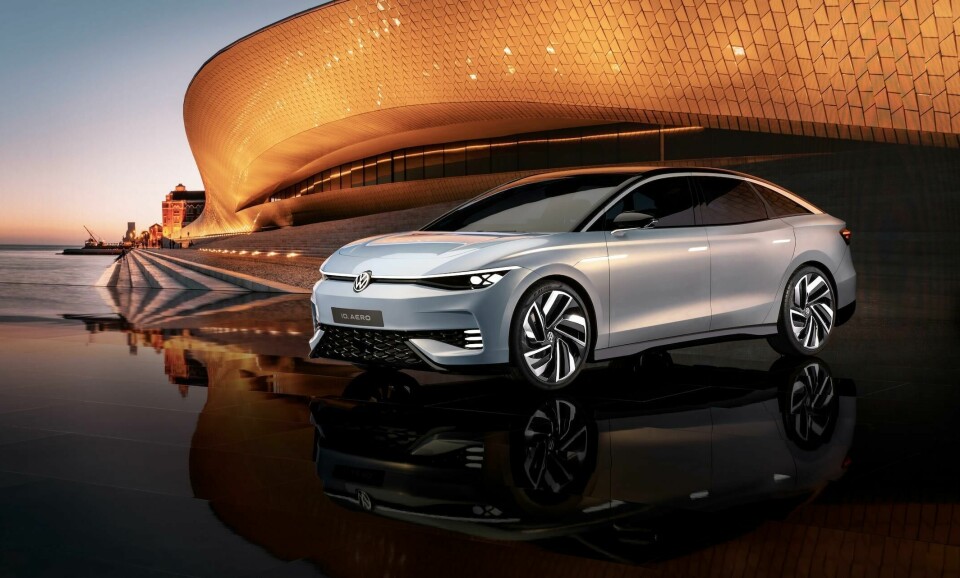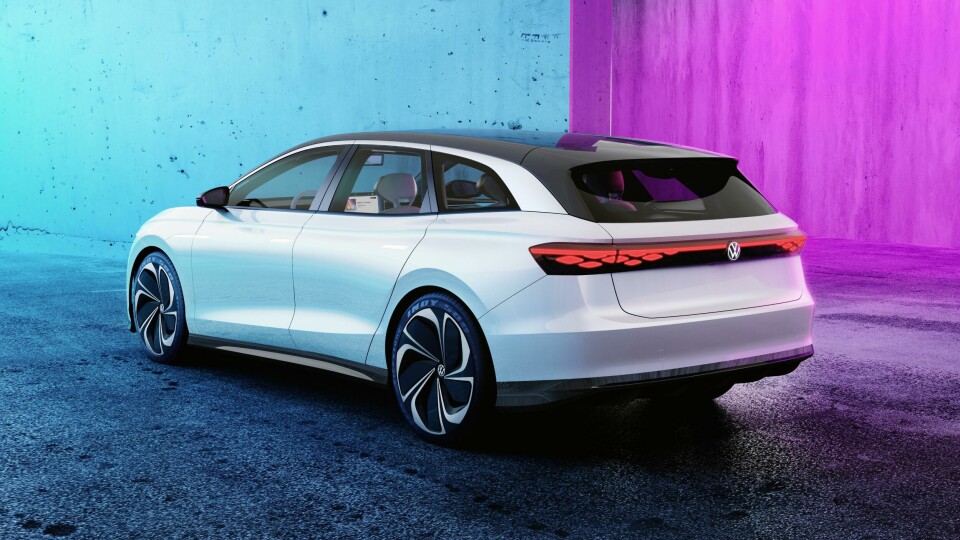
Volkswagen re-writes the rulebook with ID.Aero concept
New images of Volkswagen’s ID. Aero reveal a sophisticated ICE-style body and now-familiar ID. design language. Could it be the informal successor to the Phaeton? Car Design News’ Freddie Holmes speaks to VW design chief Klaus Zyciora
Volkswagen has revealed a suave ‘limousine’ style sedan that will soon bolster its all-electric line-up. Although exclusively a show car for now, the ID.Aero will eventually occupy new territory in the ID. portfolio, sitting alongside the ID.3 hatchback, ID.4 SUV and ID.5 coupe-SUV.
Proportionally, the ID.Aero bears closest resemblance to the latter, with an elongated roofline that fades into a stubby rear deck. The concept is described as a premium mid-size sedan with a “progressive, stylish and aerodynamic design” that leads to “generous” level of interior space.
Klaus Zyciora, head of Volkswagen Group design, says the challenge was to balance the qualities of a traditional limousine with the packaging of a battery electric vehicle. “The good old rules apply: wheelbase, width and height, lengths of front- and rear- overhangs and dash to axle ratio,” he told Car Design News.
But with electric cars, the bulky battery that sits below the floor tends to extend the wheelbase and raise the height of the vehicle. “These can be burdens or opportunities depending on how you look at it,” continues Zyciora. “The ID.Aero capitalises on this new architecture with a cab-forward design and a very short front overhang. This resembles into an elegant yet modern design that is redefining the rulebook.”
When you see the car in the flesh it will be immediately recognisable as a member of the ID. family
Like all new EVs at this juncture, aerodynamics – which can boost electric driving range – had a heavy influence on the overall design. “Aerodynamics is becoming an increasingly important field of innovation and design,” says Zyciora. “You need great knowledge and experience to shape your design to perfection and achieve good drag.” The task was to retain a sense of spaciousness while also creating a sleek body shape that can cut through the air. The team seems to have managed it, with an impressive drag coefficient of 0.23 and a range of around 385 miles.
With that ranging hood and a relatively short front overhang, the cabin appears to sit much further back than would usually be expected of an EV. This also helps to lengthen the car, creating a flatter roofline that reduces air resistance. Rather than pushing the cabin into the space previously occupied by an engine, the conventional sedan shape is maintained – and there is a clear whiff of Arteon about its stance.
Perhaps a better comparison would be the Phaeton, an imposing long-wheelbase saloon that was discontinued in 2015; in final production form, the ID.Aero would arguably be its successor. A similar shape can also be seen with the Mercedes-Benz EQS, another high-end EV with which it will likely compete.
As head of Volkswagen Group design, Zyciora is responsible for the global design of the Group’s ten brands. He describes his design ethos as being characterised by “clarity, reduction and continuity.” That is certainly the case with the ID.Aero, which manages to pair minimalism and opulence beautifully. Not only that, but it manages to cut into a new segment of the market while retaining clear influences of the ID.3, 4 and 5. This was always the ultimate goal, he explains.
The ID.Aero bodywork is a little more restrained compared to its other electric cousins, a nod to the limousine-feel Volkswagen’s design team is gunning for
“When you see the car in the flesh it will be immediately recognisable as a member of the ID. family, featuring not only the same surface treatments and design cues but also light signatures and the enlarged interior footprint,” Zyciora elaborates. Indeed, familiar wraparound tail lamps sit below a subtly raised rear mask, a nod to the discrete spoilers found on other models in the ID portfolio. The shoulder line, which slopes upwards from the rear fender to accentuate the vehicle’s hips, also creates a similar figure to the ID.4 and ID.5.
It also bears close resemblance to the ID.Space Vizzon shown at the LA auto show in 2019, although the shooting brake bodyshape has gone for now. “The aim to create a shape that stands the test of time is always inherited in Volkswagen Design. The ID.Aero is combining this into a new typology inside, as roomy as an SUV with a slightly elevated seating position, while on the outside is a bold and elegant design.”

Elsewhere, the ID.Aero bodywork is a little more restrained compared to its other electric cousins, a nod to the limousine-feel Volkswagen’s design team is gunning for. The rear bumper is entirely devoid of grilles, for example, and bears only one gentle crease along the bumper insert. From the rear, it is clean and refined. The headlights are also far narrower than usual, squinting out from a surprisingly long hood. This is a key trait of the ID. family, where lighting is used as decoration and “a symbol for electric mobility.”
The ID.Aero received its global unveiling in China, the first market to receive a production version, but it will eventually hit dealerships globally. While the Aero is exclusively a show car, the first production models are expected to go on sale in the second half of 2023. A European series version should come out of Emden at some point in 2023. Judging from these teasers and both markets’ appetite for luxury electric vehicles, you’d imagine this electric limo could do rather well.










